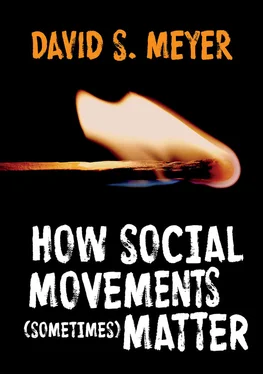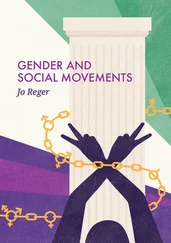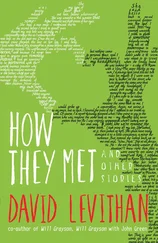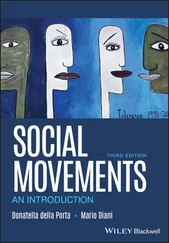Social movements also change the people who participate in them, educating as well as mobilizing activists. They promote ongoing awareness and action that extends beyond the boundaries of one movement or campaign. Those who turn out at antiwar demonstrations today have often cut their activist teeth mobilizing against globalization, on behalf of labor, for animal rights or against welfare reform. By politicizing communities, connecting people, and promoting personal loyalties, social movements build the infrastructure not only of subsequent movements, but of a democratic civil society more generally.
In chapter 6, we’ll look at how we understand the impact and influence of movements. Popular histories tell stories about movements (or omitting movements) that don’t necessarily line up with broadly understood facts. We tend to tell event and leader-centered stories that abbreviate the historical process of social change. This is understandable: brave leaders and dramatic events make for a better story than the much more difficult and time-consuming processes of changing the world. Activists have to work to recognize their influence, and then claim credit for it. Because movements never get exactly what they seek, and depend upon a host of outside factors to be influential, it’s easy to miss the impact of protest; moreover, the accuracy of a story isn’t the only factor that affects the acceptance of a story. A compelling account matters, as does the position of the person telling it. We will look at how the accepted understandings of the movements of the past affect the movements and activist campaigns that emerge in the future.
1 1 http://www.disruptj20.org/tag/press/(accessed January 26, 2018).
2 2 Most of those arrested refused to cooperate with police or prosecutors, choosing to face trial rather than negotiate plea agreements. After a jury acquitted the first six defendants of all charges, the federal prosecutor dropped charges against most of the remaining defendants. See Ryan J. Reilly, “Justice Department Drops Felony Charges Against 129 Trump Inauguration Defendants but 59 other #J20 protesters will face trial.” The Huffington Post, January 18, 2018. https://www.huffingtonpost.com/entry/j20-felony-charges_us_5a6122b4e4b074ce7a06d638(accessed February 1, 2018).
3 3 Peta Australia, “Nearly Naked Peta Members to Take On Mercedes-Benz Fashion Festival for Refusing to Renounce Fur.” https://www.peta.org.au/media/nearly-naked-peta-members-to-take-on-mercedes-benz-fashion-festival-for-refusing-to-renounce-fur/(accessed November 13, 2020).
4 4 Greenpeace International, “Actress Lucy Lawless joins climate change survivor in protest against Arctic exploitation for Norwegian oil.” July 21, 2017. https://www.greenpeace.org/international/press-release/7449/actress-lucy-lawless-joins-climate-change-survivor-in-protest-against-arctic-exploitation-for-norwegian-oil/(accessed November 13, 2020).
5 5 Marc Santora and Anna Schaverien, “Anti-Brexit Protesters Descend on London as Parliament Debates.” The New York Times, October 19, 2019.
6 6 Deeohn Ferris, “Environmental Justice: Moving Equity from Margins to Mainstream.” Nonprofit Quarterly, August 15, 2019. https://nonprofitquarterly.org/environmental-justice-moving-equity-from-margins-to-mainstream/#:~:text=These%20are%3A%20Defenders%20of%20Wildlife,Society%2C%20and%20World%20Wildlife%20Fund (accessed November 13, 2020).
CHAPTER 1 Why Movements Emerge and How They Work
Contemporary visitors to Boston can tour the Boston Tea Party Ships and Museum, and follow a guided tour of “the event that started a Revolution” 1through a museum of the revolution, educated and entertained by actors who recreate heroic figures from America’s War of Independence. The tour ends with visitors mounting the deck of a replica of a colonial-era ship, throwing crates of tea over the side. Because the tour is pedagogical, rather than political, the crates, secured by ropes, don’t quite reach the waters of Boston Harbor. The boxes can be quickly retrieved so that the next visitor can enjoy the revolutionary experience.
The event holds an iconic place in American history. In the winter of 1773, colonists opposed to a selectively administered tax on tea – and British rule more generally – assembled by the harbor to stage a political protest. In the midst of his rally speech, rebel organizer Sam Adams signaled his supporters to act. Perhaps a hundred men who came prepared, costumed as Indians, screamed as they boarded the ships and began to throw tea over the side; they were joined by another hundred or so volunteers who had come to watch, but were inspired by the moment. More than 1,000 others watched, cheering the protesters on. Even in the drama of the moment, protesters were careful not to hurt anyone, nor to damage the ships (Griswold 1972).
The Boston Tea Party affected more than the next morning’s breakfast. Outraged and threatened, local police arrested and punished a few of the vandals they could find. And in London, Parliament instituted a series of “Coercive Acts,” intended to punish the colonists, particularly in Massachusetts. Among other insults, Parliament shut down the Boston Harbor, until the colony could pay for the tea in the sea, imposed direct British rule on the colony, and provided for the quartering of British soldiers in Massachusetts. Patriots called the response “The Intolerable Acts.”
In the short run, the Tea Party looked like a bad idea. Colonists had long opposed taxes on tea, and had found a way around them, buying untaxed smuggled tea, some of it shipped by John Hancock, who was already a major political figure in Massachusetts. The tea that ended up in the harbor, which was to be sold by the East India Company, would actually have been sold at discount, even cheaper than the smuggled tea. The tax break offered by the Crown represented Britain’s attempt to boost the company’s failing fortunes. The protest, which destroyed their goods, didn’t help. Meanwhile, tea smugglers, whose businesses were threatened by the cheaper official tea, were among those supporting the Tea Party.
Over a slightly extended time frame, however, the Tea Party further polarized politics in the colonies, increasing pressure on people to take sides. Opposition to the Intolerable Acts created additional protests over the next year, and resistance led to the first Continental Congress, held in Philadelphia the following year. That Congress petitioned King George III to end the Intolerable Acts, declared a boycott of British goods, and scheduled a second Constitutional Congress – just in case the Crown didn’t respond to the petition. It didn’t. Resistance grew in the colonies, and armed conflict between the British military erupted in the Battles of Lexington and Concord in the Spring of 1775. Shortly thereafter, the second Constitutional Congress convened, and that Congress eventually endorsed the Declaration of Independence and began to muster an armed resistance. Meanwhile, Thomas Paine (2019) published Common Sense in 1776, a series of pamphlets codifying and justifying the case for an independence movement. In this frame, the Tea Party was critical in setting into motion the events that culminated in American independence (Maier 1972).
So, we can tell a relatively coherent story in which the Tea Party was a catalyst for all that followed, including increased repression and provocation from the British, intensified organizing among the colonists both politically and militarily, and the cultivation of a liberal democratic ideology that supported an independence movement. But history didn’t begin on that December night in Boston Harbor. The circumstances that give rise to dramatic protest events, and to social movements more generally, also contribute to the broader process of social change.
Читать дальше












